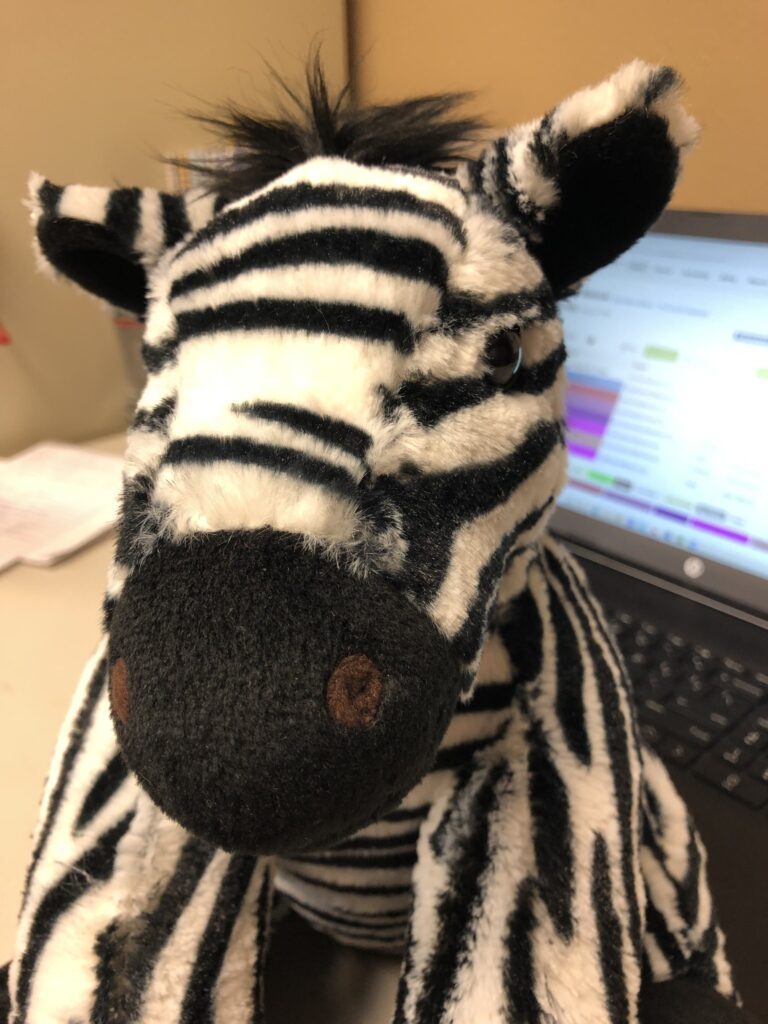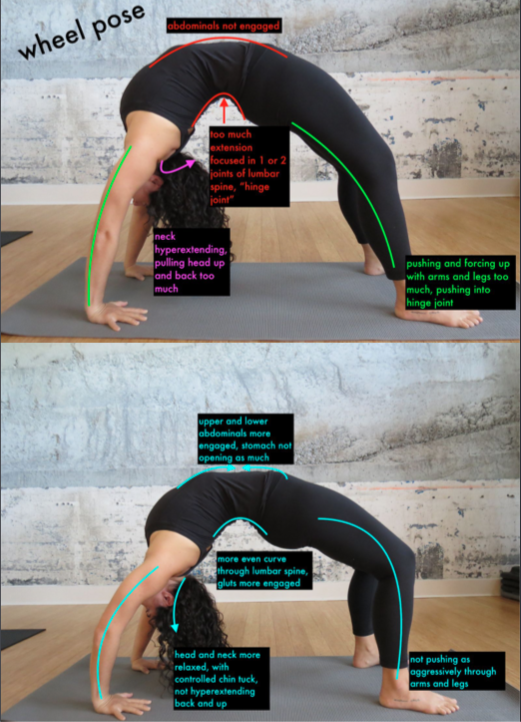4.17.23
In the previous post in this series, we started talking about POTS (postural orthostatic tachycardia syndrome). POTS is the more severe end of dysautonomia which means an imbalance of the involuntary nervous system.
As we talked about in the last post, dysautonomia and POTS are common in people with hypermobility spectrum disorder (HSD) and with hypermobile Ehlers-Danlos Syndrome (hEDS). There are physical mechanisms: 1. Neuropathic which is caused by damage to the small nerves in the legs that control the size of the small arteries; 2. Hypovolemic which means low blood volume caused by the kidneys getting rid of too many electrolytes and too much fluid; 3. Hyperadrenergic which means that the fight or flight side of the involuntary nervous system is too active for any one of a number of reasons.
Like many medical problems, dysautonomia exists on a spectrum. When we think about a spectrum, we can imagine a graph that charts severity of symptoms across all sufferers. A good illustration with this is the graph shown here. For all the patients with dysautonomia, some (on the left side of the graph) will have very few symptoms, many will have a moderate number of symptoms (center) and some will be on the severe end (right side of the curve).

All of these kinds of POTS have both conservative, non-drug, and medication treatments. In this post we would like to review some of the treatment approaches.
Conservative Treatment
For our purposes, conservative treatment of POTS is any kind of treatment that does not involve medications. And there are a number of tips and techniques to keep the problem at bay.
Things to Avoid
There is no one uniform way of treating POTS. There are a number of medications that can make POTS worse. It is not the purpose of this article to direct medications. A list of some medications which can worsen symptoms is in Table 1. These should be discussed with the prescribing physician.
| Table 1: Medication Types Which Can Worsen POTS {2} Alpha receptor blockers Angiotensin converting enzyme inhibitors Beta blockers Calcium channel blockers Diuretics Ganglionic blocking agents Hydralazine MAO inhibitors Nitrates Opiates Phenothiazines Sildenafil citrate Tricyclic antidepressants Oral contraceptives containing drosperinone Norepinephrine transporter inhibitors Serotonin reuptake inhibitors |
People with POTS are also advised to avoid alcohol and extreme heat.
Hydration and Electrolytes
Patients with POTS and other levels of dysautonomia frequently have an imbalance in the hormonal system the kidneys use to determine how much water and how much of the body’s electrolytes to release in the urine. So, these people are chronically dehydrated and low on minerals. The answer is to drink and supplement electrolytes.
Recommended levels of fluid intake per day are between 2-3 liters {1,2,3}. This translates into 68-101 ounces, or 8.5-13 cups, or 0.5-0.8 gallons.
Recommendations in the literature for salt intake vary from 8-10 grams {1} to 10-12 grams {2, 3}. We have found that these numbers are individual and can vary. One way to manage salt intake when seeking to improve symptoms of POTS is to start with about 3gm of added salt per day and increase by 1 gram per day up to a maximum of 12 gm per day depending on symptoms. In other words, if the person feels best at 9 gm/ day, that should be their intake unless symptoms change. Doctors can also test for sodium levels by blood test which can give a measure of how well supplementation is working.
All of the references we have found so far describe electrolyte supplementation in terms of salt intake. If taking an electrolyte supplement such as Nuun, Pedialyte or Gatorade, the number of milligrams of sodium can be used as a reference or follow the gradual increase approach described above. (Remember, 1000mg = 1 gm)
Elevation of Head
There is some evidence that sleeping with the head of the bed raised by 4-6 inches may help with POTS symptoms. {3}
Muscle Squeezes
Since for many with POTS the pooling of blood in the lower part of the body can lead to increased pounding, feeling ill and/ or dizziness when the person changes positions, movements or muscle contractions that help move the blood up out of the legs are a part of avoiding symptoms with position changes. These can include exercises done lying down before sitting up, exercises done sitting before standing, and exercises to be done while standing. A physical therapist can prescribe specific exercises.
Compression Garments
Persons with the Neuropathic and/ or Hypovolemic types of POTS generally benefit from wearing compression garments. Here again, depending on the severity of symptoms, different levels and lengths of garments may be useful. For those with more severe cases of POTS, a compression garment worn over the entire lower extremity and including the abdomen is recommended. {3} Here again, for stronger POTS symptoms, garments that give compression in the 30-40 mmHg (millimeters of mercury) range are suggested {3}. We have had many patients that get very good benefit from calf high or thigh high compression. And too, we have had many patients who get good relief from wearing compression garments giving 20-30 mmHg. Experimentation with different garments is key.
Exercise
Regardless of the type of POTS, exercise is a recommended non-medication form of treatment {1,2,3}. Current research strongly suggests that patients with POTS have some degree of heart muscle atrophy, weakening of the heart. This can be improved with a carefully structured exercise program. We will explore this in much more depth in the third and final blog post, but meanwhile here is an interesting tidbit. The original exercise approaches for people with POTS were modeled after exercise programs developed for astronauts weakened by prolonged weightlessness in space, such as the crew of the space station. These approaches have also been modified for use with people who have been confined to bed for a sustained period. More later.
Medical Treatments with Medications
While non-drug approaches to treatment form a very important foundation for treatment, many patients whose symptoms are not well controlled using conservative approaches alone may require supplements and/ or medications.
Neuropathic POTS
In this kind of POTS, dilated blood vessels in the lower extremities lead to pooling of blood there with less blood available for the brain. Medications used to counteract this can include the following. See Table 2.
| Table 2. Medications Targeting Vasoconstriction { 1, 2} Midodrine Droxidopa Octreotide Dextroamphetamine Methylphenidate |
Hypovolemic POTS
If increased fluid intake and electrolyte intake are not adequate, there are several medications which can help to increase fluid volume in the body. See Table 3
| Table 3 Medications to Improve Fluid Retention {1,2} Fludrocortisone Desmopressin Erythropoietin |
Hyperadrenergic POTS
Regulating the sympathetic nervous system can be much more complicated than the other two types of POTS above. The medications are often not as well tolerated and may have more unwanted side effects. For people with high resting heart rates, Propranalol is the single most common medication prescribed. People taking any of these should work closely with their physician to achieve the desired results. See Table 4.
| Table 4 Medications for Sympathetic Support {1,2} Propranolol Ivbradine Clonidine A-Methyldopa Pyridostigmine |
MCAS and POTS
Some patients with POTS may have symptoms largely caused by mast cell activation disorder {5}. Simply said, mast cells are naturally occurring cells in the body which cause inflammation as part of the body’s defense system. These can get overly sensitive and release too many inflammatory chemicals. Some of these chemicals, like histamine, may cause opening of blood vessels in the legs in some patients with hyperadrenergic POTS. We hope to do a series of blog posts on mast cell activation later this year.
In the third and final post of this series, we will look at exercise as a form of treatment for POTS. As you might imagine, we PTs have some thoughts about this and there is a good deal of information.
Until then, cheers!
Zebbie
Zeborah Dazzle, PT, WWF
Spokes-Zebra and Patient Educator for Good Health Physical Therapy and Wellness.
Thanks to Dr. Mark Melecki, PT for his assistance in preparing this blog. (It is very challenging to type with hooves rather than fingers. Thanks Mark.)
References:
- Raj, S., Postural Tachycardia Syndrome (POTS), Circulation 2013; 127: 2336-2342.
- Zadourian, A., et al, Postural Orthostatic Tachycardia Syndrome: Prevalence, Pathophysiology, and Management, Drugs (2018) 78: 983-994
- Fu, Q. and Levine, B., Exercise and Non-pharmacological Treatment of POTS, Auton Neurosci. 2018 December; 215:20-27
- Olshanksy, B., et al, Postural Orthostatic Tachycardia Syndrome (POTS): A critical assessment. Prog Cardiovasc Dis. 2020; 63(3): 263-270
- Shibao, C., et al, Hyperadrenergic Postural Tachycardia Syndrome in Mast Cell Activation Disorders, Hypertension Volume 45, Issue 3, 1 March 2005; 385-390





